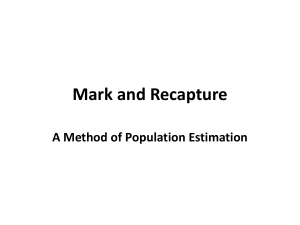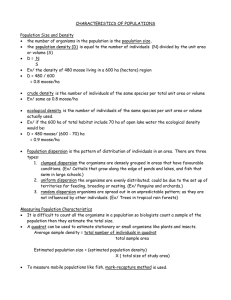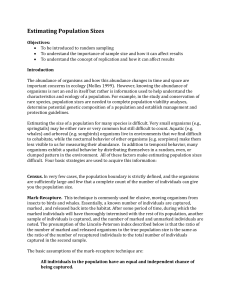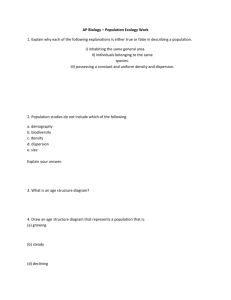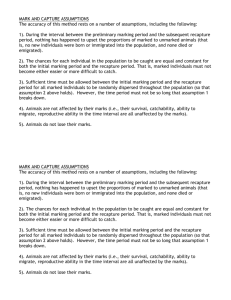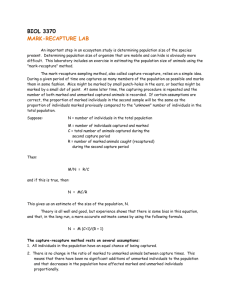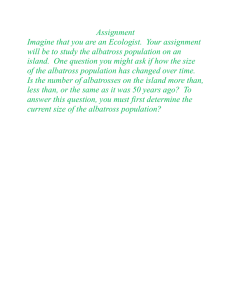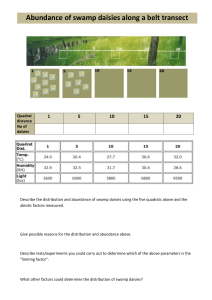Population Estimation Methods: Quadrats & Lincoln Index
advertisement
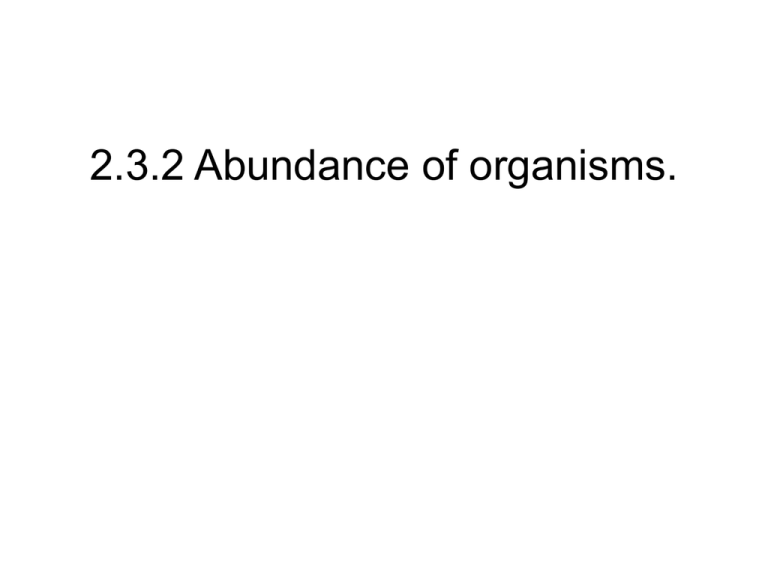
2.3.2 Abundance of organisms. Methods for Estimating Population Size 1. Quadrats 2. Capture/Mark/Release/Recapture (Lincoln Index) • Knowing population size is important in making environmental decisions that would affect the population. • Making a decision on an estimate that is too high extinction. • Making a decision on an estimate that is too low unnecessarily hurt people that depend on the animals for food & income. • When estimating population size it is important to collect RANDOM SAMPLES. • A sample is a part of a population, part of an area or part of some other whole thing, chosen to illustrate what the whole population, area or other thing is like. • In a random sample every individual in a population has an equal chance of being selected. Using Quadrats 1. Mark out area to be sampled. 2. Place quadrates ( 1 m2, 10 m2) randomly within the area. 3. Count how many individuals are inside each of the quadrates. 4. Calculate the mean number of individuals per quadrate. 5. Pop. Size = mean X total area area of each quadrat RANDOM QUDRATS SYSTEMATIC QUDRATS Quadrat sampling is suitable for plants that do not move around and are easy to find. Quadrat method can be used to determine: POPULATION DENSITY = number of individuals of each species per area. PERCENTAGE FREQUENCY = percent of each species found within an area. PERCENTAGE COVER = percent of plant covering a given area. Capture/Mark/ Release/Recapture Lincoln index 1. Capture as many individuals as possible in the area occupied by the animal population, using netting, trapping or careful searching. 2. Mark each individual, without making them more visible to predators and without harming them. 3. Release all the marked individuals and allow them to settle back into their habitat. 4. Recapture as many individuals as possible and count how many are marked and how many are unmarked. 10 marked 14 unmarked Capture and Marking 5. Calculate the estimated population size by using the Lincoln Index: population size = N1 X N2 N3 N1 = number caught and marked initially N2 = total number caught in 2nd sample N3 = number of marked individuals recaptured Most suitable for animals that move around and are difficult to find. Assumptions: 1. The population of organisms must be closed, with no immigration or emigration. 2. The time between samples must be very small compared to the life span of the organism being sampled. 3. The marked organisms must mix completely with the rest of the population during the time between the two samples. 4. Organisms are not hurt or disadvantaged by being caught and marked and therefore all organisms have na equal opportunity of being recaptured Change in the relative abundance of a species over an area or a distance is referred to as an ECOLOGIAL GRADIENT Also known as Zonation. Changes in the distribution of animals with elevation on a typical mountain in Kenya. Another example of Zonation
